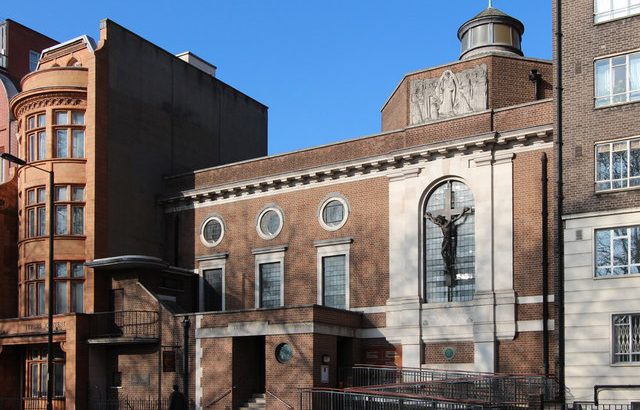The Notebook
Fr Bernard Healy
Near London’s Marble Arch, at the junction of Bayswater Road and Edgeware Road, there is a triangular traffic island. On the island are planted three oak saplings, and on the ground between them sits a stone plaque that reads ‘The Site of Tyburn Tree’. This marks the spot of the notorious public gallows where condemned prisoners from Newgate Prison were hung.
The recorded history of Tyburn as a place of execution spans six centuries, from the late 12th Century until the hanging of a highwayman in 1783. In 1571, for reasons of grotesque efficiency, the conventional gallows was replaced by a new design – a horizontal triangle supported by three legs, permitting the simultaneous hanging of as many as two-dozen prisoners. Little wonder that the triple tree of Tyburn served as a chilling reminder of the state’s power of life and death over those who fell afoul of the law.
Last of the martyrs
Tyburn is remembered in Catholic circles as the place where 105 Catholic martyrs were put to death between 1535 and 1681. Amongst them were the famous English Jesuit St Edmund Campion and our own Archbishop of Armagh, St Oliver Plunkett, who was the last of the Tyburn martyrs.
A short walk from the site of the gallows is 8 Hyde Park Place, the site of the Tyburn Convent, a monastery of enclosed Benedictine Nuns, the Adorers of the Sacred Heart of Jesus of Montmartre. In the basement of the monastery is a shrine to the 105 martyrs, with an altar modelled after the shape of the infamous Tyburn Tree. The sisters offer tours of the shrine three times a day (Monday to Friday at 10.30am, 3.30pm and 5.30pm), and priests can arrange to celebrate Mass at the altar.
The story of how the convent came into being is a curious one. In 1585, a Fr Gregory Gunne was put on trial. In the course of his evidence, he spoke to the court about Campion’s execution: “You have slain the greatest man in England. I will add that one day there, where you have put him to death, a religious house will arise…”
In 1898, Mother Marie Adele Garnier established her order of nuns, dedicated to the Sacred Heart and Adoration of the Eucharistic Lord, in Montmartre (‘The Hill of Martyrs’) Paris. However, the anti-clerical laws of the time meant that her convent, like many other French religious houses, was driven out of the country and was forced to find refuge in England.
How astonishing it would have seemed to earlier generations that ‘Protestant’ England would provide a refuge for religious fleeing persecution in ‘Catholic’ France. Providence decreed that the house in Hyde Park Place should come into the hands of the nuns, and so Fr Gunne’s prophesy was fulfilled.
Challenge
Celebrating Mass in the Shrine, I found myself thinking of the martyrs and of Mother Garnier and her sisters. They found themselves in times where their Faith was directly and powerfully challenged, and they responded to that challenge with bravery and trust.
There’s a perennial message for us in that – whatever is asked of us, our ancestors in Faith faced greater challenges, and their response shows us how we might strive to do better. As St Augustine put it: “The times are bad! The times are troublesome!”
This is what humans say. But we are our times. Let us live well and our times will be good. Such as we are, such are our times.
A plaque in the chapel of the Tyburn Convent records another connection between 8 Hyde Park Place and Catholic history. Until 1873, it was the home of James Hope-Scott, a prominent English barrister.
A convert to Catholicism, his legal advice to Blessed John Henry Newman meant that the latter made public (and justified) accusations against the laicised Italian apostate priest and serial rapist Giacinto Achili who was at that time promoting the Evangelical movement in England.
Achili sued Newman for defamatory libel. Newman lost the trial, but emerged with his reputation enhanced as it seemed as though the justice system had failed him.
Achili had the legal victory, but his reputation was destroyed. Newman remained close to Hope-Scott, and a plaque in the chapel records the fact that Newman preached at Hope-Scott’s funeral in 1873 and returned to 8 Hyde Park Place afterwards.


 8 Hyde Park Place, the site of the Tyburn Convent, a monastery of enclosed Benedictine Nuns.
8 Hyde Park Place, the site of the Tyburn Convent, a monastery of enclosed Benedictine Nuns.